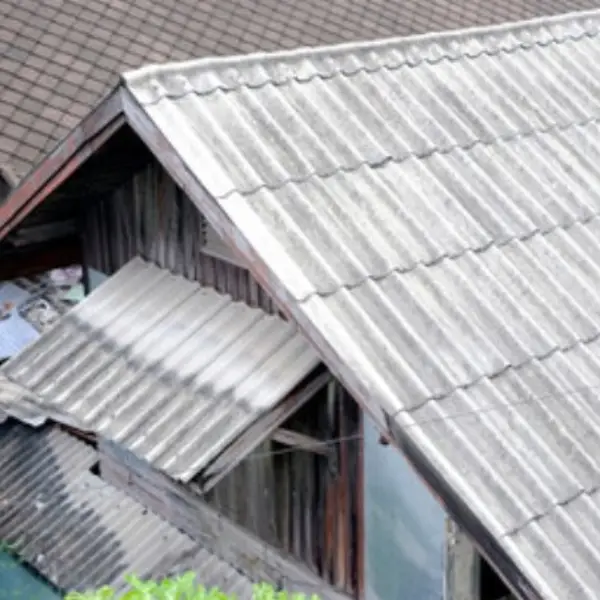Asbestos Roofs: The Invisible Fibers That Can Damage Your Lungs

Asbestos is a Class 1 carcinogen recognized worldwide, and Taiwan banned its use years ago. But a ban doesn’t make it disappear. Across the country, many older buildings—including warehouses, farmhouses, worker dorms, tin-roof structures, and even residential homes—still have asbestos roofing left from past construction.
After recent typhoons and severe windstorms, many of these roofs have been cracked, broken, or torn away. Fragments of asbestos sheets are scattered into the air, carried by the wind. You may not notice it, but the air could be filled with microscopic cancer-causing fibers—particles you can’t see or smell, but that can reach deep into your lungs.
Asbestos Fibers: Fine, Rigid, Colorless, Odorless—and Deadly to Your Lungs
Asbestos becomes dangerous when damaged, renovated, aged, or removed. It releases ultra-fine fibers—similar to glass fibers—that are invisible to the naked eye yet incredibly strong. Once airborne, they can be inhaled without you realizing it, traveling deep into the lungs.
The real danger is that once asbestos fibers are inhaled, the body cannot naturally expel them. They lodge in the alveoli, irritating lung tissue like tiny needles. Over time, this can lead to chronic lung inflammation, pulmonary fibrosis, and deadly diseases such as mesothelioma and lung cancer.
This risk isn’t just a thing of the past. If you live near old buildings, aging factories, or still have asbestos materials at home, a windstorm or renovation could expose you to high levels of airborne fibers.
How to Protect Yourself
If you notice damaged roofing, broken metal sheets, or building materials that may contain asbestos nearby, take these precautions:
✅ Wear an N95 filtration mask or higher-grade protection outdoors to block asbestos fibers from entering your airways.
✅ Never attempt to clean up broken asbestos roofing or debris yourself—contact certified professionals who follow strict safety procedures.
✅ Keep windows closed to prevent airborne fibers from drifting indoors.
Protect Your Lungs by Staying Alert
Asbestos-related illness doesn’t happen overnight, but the impact can last for decades. Breathing is something we do every day—it’s not worth ignoring the invisible risks in the air.
A healthier life starts with awareness and protection. Don’t let old construction materials become a hidden cancer threat in your home.
Start with a proper mask—protect yourself, and protect your family.
More Frequently Asked Questions About N95-Level Filtration Masks
Q: What other masks offer the same level of protection as an N95 filtration mask?
A: Masks certified under standards such as Europe’s EN 149 FFP2 or China’s GB/T 32610 Class A provide similar protection, filtering at least 95% of suspended particles around 0.075 microns—matching the N95 filtration efficiency.
Dacian supplies masks meeting N95-grade requirements, featuring:
- Innovative Microporous Membrane Technology with over 95% filtration efficiency
- Washable and reusable design compatible with 75%–95% alcohol disinfection
- Effective against oil-based and non-oil particles (N95 / P95 grade)
- HEPA H12-13 level filtration capable of filtering heavy metal particles
- Highly breathable microporous structure for comfortable, long-term wear
These features deliver dependable protection while ensuring comfort and reusability.